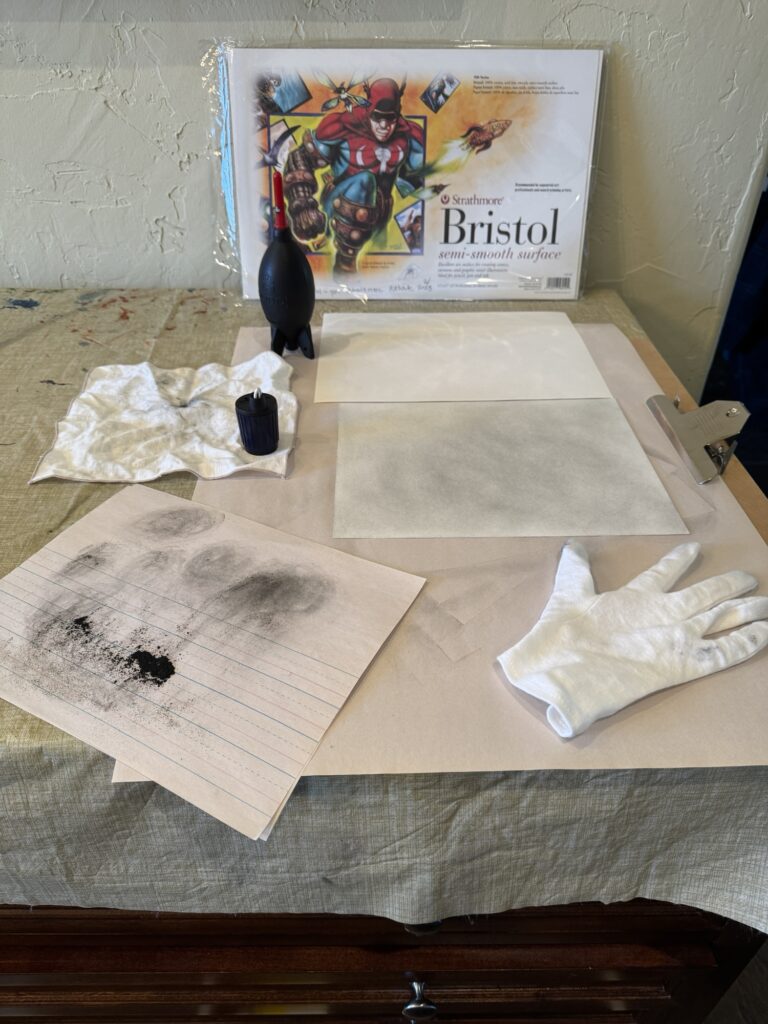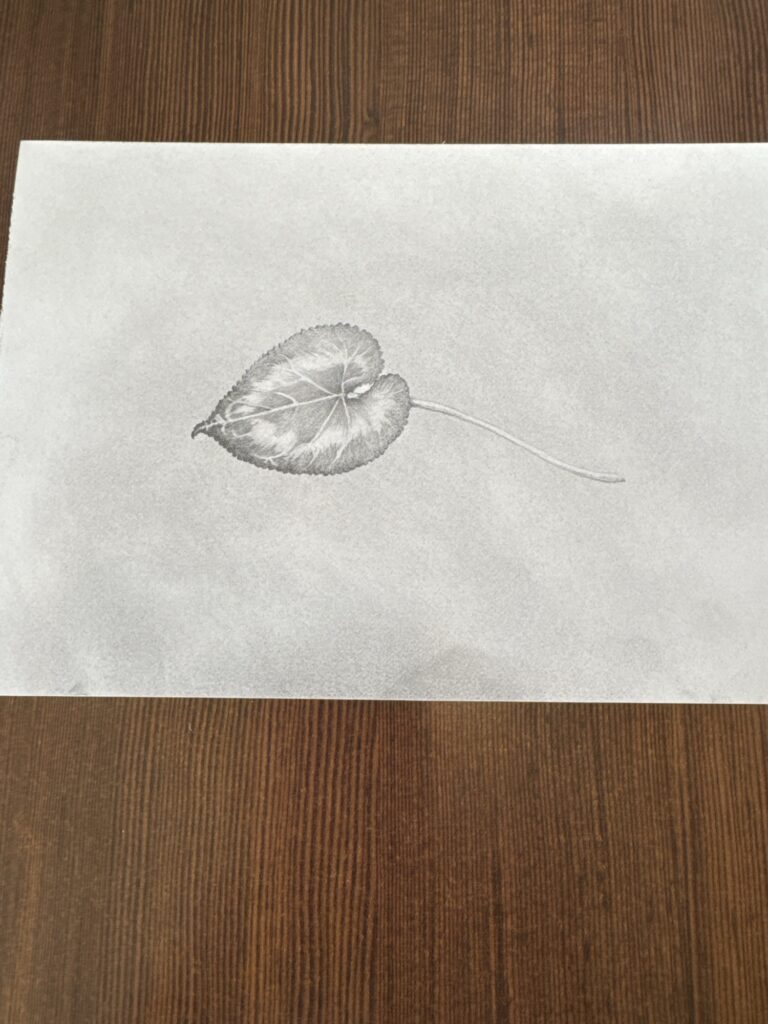
Strathmore Bristol is excellent for many uses, as it comes in a variety of finishes, weights (plies) and price points. The really good stuff is the 500 series, whether smooth, semi-smooth or plate (smoothest of all with a hard, shiny surface). Today I’m preparing a piece of Semi-Smooth paper for drawing and I wanted to know which side was up with this paper. Most paper has a right and wrong side, depending on what you’re doing with it. A visit to the Strathmore site reveals that Bristol is designed to have 2 identical working surfaces, top and bottom.
Shown above is the paper after being “toned” with graphite. This is a fun way to work. Any highlights are erased from the medium tone of the paper and darks are made with pencils of varying hardness. HB or F is a good place to start. In the photo above you can see the tools I use for the toning process. It’s pretty simple, you get some graphite powder, load up a cloth or wad of clean, soft paper, like paper toweling or even Kleenex, and spread it around. I’m lucky. I have a source of pure graphite powder because I use the drafting-style clutch pencil holders for 2mm leads that have no wood attached. I use the rotary-style lead pointer shown above and it provides plenty of ground up graphite, which I would discard if I didn’t use it to tone paper.
The plan is to procure an almond branch with at least one blossom open and go from there. The paper is ready and waiting!

The cyclamen leaf study above is an example of the technique. Some artists are obsessive about getting the ground color even, but I like a little variety there, as long as there are no obvious spots that are rubbings of something that was under the surface, or worse fingerprints! Thus the glove in the first photo.
Updated 5 days later:
Below is the finished drawing of almond blossoms, shown with more of the tools I use for this technique:
The clutch style lead holders with F and HB leads, my 2 most used grades.
Stick style white plastic erasers, carved to give good edges.
Kneaded eraser, endlessly useful for erasing small areas and touching up the background if any stray marks are made on it.
Soft brush to remove stray grains of graphite and eraser noodles.

The final word on this paper is that its surface takes the graphite tone very evenly and nicely, but it is hard to erase back to pure white. It is excellent for straight drawing with graphite, but not as good for the toned ground technique as other papers I’ve used in the past. Still, this little drawing is a keeper I’ll sign and likely frame.
